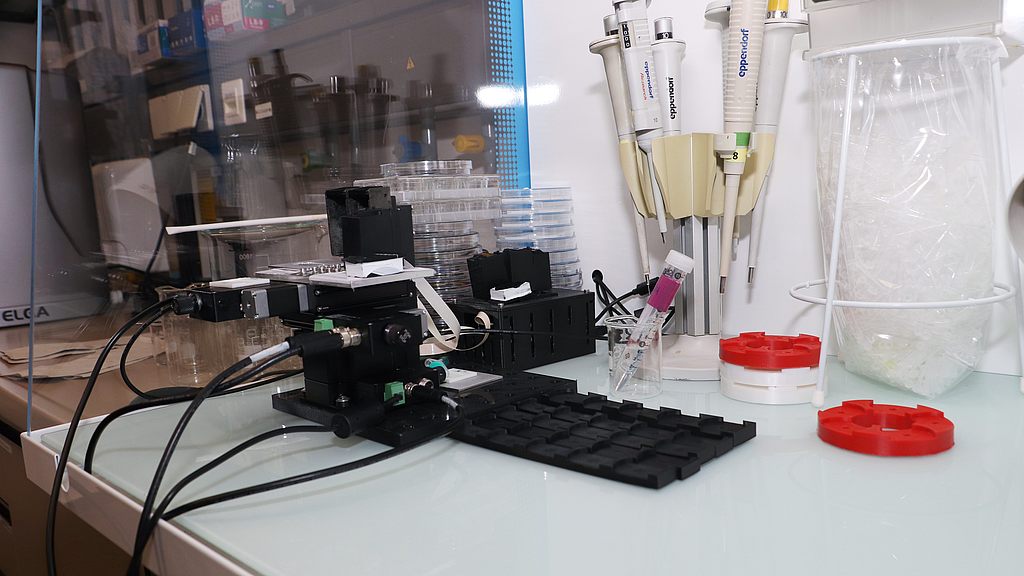Polarizing microscope
A polarizing microscope is a light microscope that works with polarized light. It is used primarily in mineralogy for the examination of rock samples and for texture studies of liquid crystals. Below the specimen stage is a polarizing film, also called the polarizer or primary filter, which polarizes the light from the microscope's light source, i.e., only allows light to pass that oscillates in the same plane of vibration. Above the stage is a second polarizing foil, called the analyzer or secondary filter, which is rotated 90° with respect to the first foil. This arrangement of primary and secondary filters is called "crossed polarizers". If there is no sample on the stage, no light reaches the eye because the second polarizing foil is not transparent to light oscillating in only one plane of vibration. Some chemical compounds, for example minerals, have the property of rotating the plane of oscillation of the light, they are called birefringent or optically anisotropic. By rotating the analyzer and thus changing the transmitted plane of polarization, such structures become visible; the other optically isotropic structures remain dark. It is also possible to observe colors that occur due to interference, to swing out the analyzer to examine the rock sample in linearly polarized light, or to view the sample in reflected light. By examining the various optical properties, conclusions can be drawn about the composition of the rock sample.
